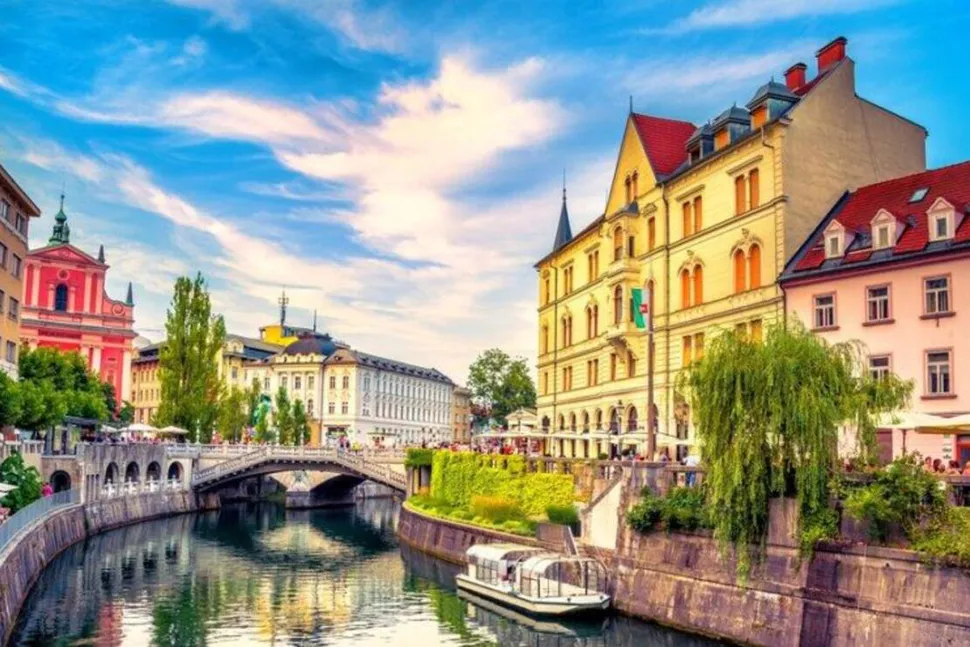Oguz Kaan Kısa · Feb. 8, 2021

Located in Southern Central Europe, the borders of the Republic of Slovenia are drawn with Austria in the north, Croatia in the northeast, Hungary in the south and southwest, Italy in the west and the Adriatic Sea in the southeast.
Baroque and Roman architecture has an intense historical influence in old Slovene cities. Both rural and urban architecture in the northwest share many similarities with neighboring Austria.
Hitchhiking can be the best option in urban transportation. Hitchhiking is quite safe in Slovenia. It can sometimes be difficult for travelers to use public transport. Service hours vary and therefore need to be planned in advance. They work less frequently on Saturday and Sunday. Maps are available at gas stations or bookstores.
The Julian Alps mountains and rivers and the Kamnik-Savinja Alps provide an excellent area for trekking, mountain biking, rafting and skiing. There are many caves in the southern region. Travelers can have the chance to enjoy different spa holidays in the eastern region and swim in the Adriatic Sea. The country has a highly developed health sector. In any emergency, an ambulance can be requested by calling 112. Hygiene standards are high and tap water is generally clean and potable. Tick vaccination is recommended for tourists going to forest areas. Although the actual attack is very rare, there is a chance to encounter a bear in the southern forests.
There are many UNESCO protected and candidate areas that can be visited in Slovenia, religious architecture, architectural heritage, cultural and historical areas, and natural areas.
Skocjan Caves have been on the UNESCO list since 1986. It is one of the must-see places with its natural bridges and windows. Since 2011, only a small part of it has been opened to visitors.
Three equal horizontal stripes white (top), blue and red, derived from the medieval arms of the Carniola Quadrant; Slovenian seal (a shield with the image of Triglav, Slovenia's highest peak, white in the middle against a blue background; below it are two wavy blue lines indicating seas and rivers, and above it are three or six pointed stars. The inverted triangle taken from the arms of the Counts of Celje, the great Slovenian dynastic house), appears on the top of the flag centered with white and blue bands.
Prehistoric pile dwellings around the Alps and Mercury heritage - Almaden and Idrija are other UNESCO listed heritage sites. Karstic limestone plateau, iron works in the hills of Bohinj and The Franja Partisan Hospital are candidates for UNESCO list.
Over the centuries, the Christian faith has left its mark on Slovenian culture and has had a significant impact on its history. More than 300 churches in the country, monasteries dating back to the 900s, pilgrimage routes, tombs and chapels are of great tourist interest. Slovenia's rich architectural heritage is evident in towns and cities. Castles, palaces, mansions, open-air museums are worth seeing.
Those who want to get acquainted with the culture and landmarks of the country are recommended to start from the leading places in Ljubljana. In this city, travelers will find hundreds of medieval buildings, the most famous of which is Ljubljana Castle. The first references to the castle are from the middle of the 12th century, but according to historians it was made earlier. Originally, the castle was built as a protective facility. In the 17th century, it was converted into a hospital and later a prison. Nowadays, travelers, where the castle has become a museum complex, will find a painting gallery, the Historical Museum, and outlets with crafts made by local masters. In summer, the castle often becomes the venue for different musical performances and concerts.

 Back
BackLet us find your dream university.
